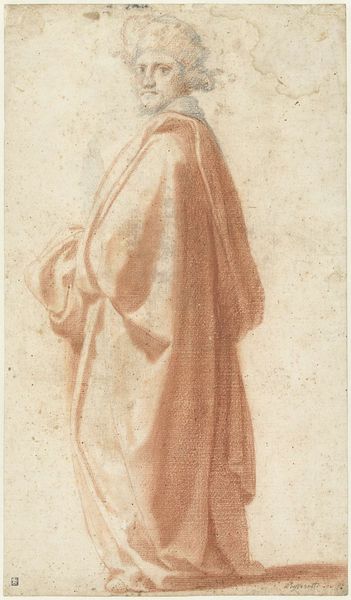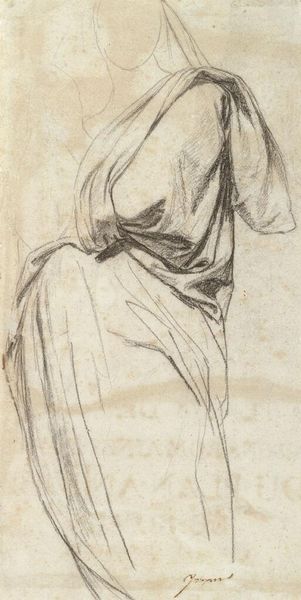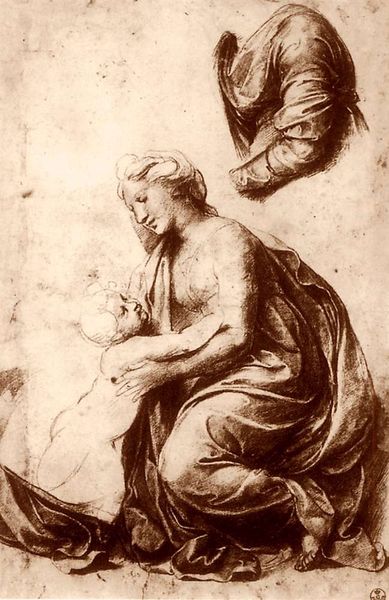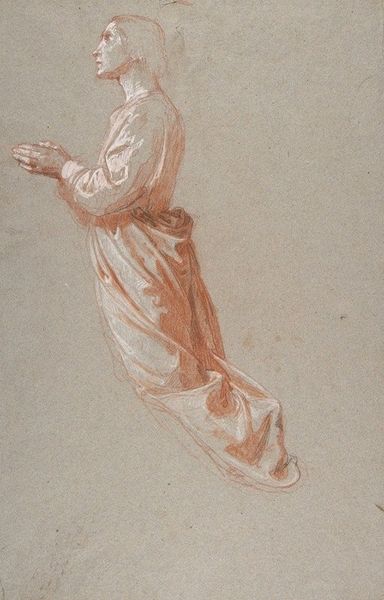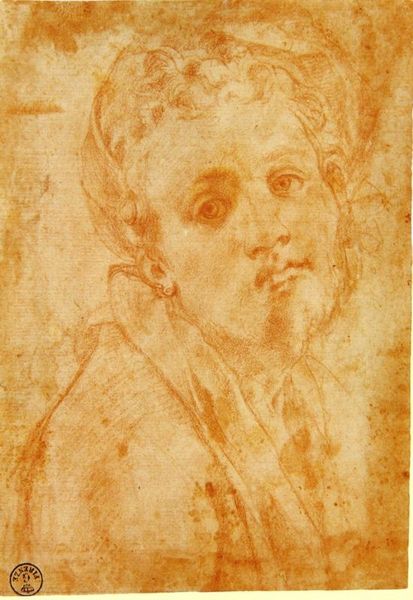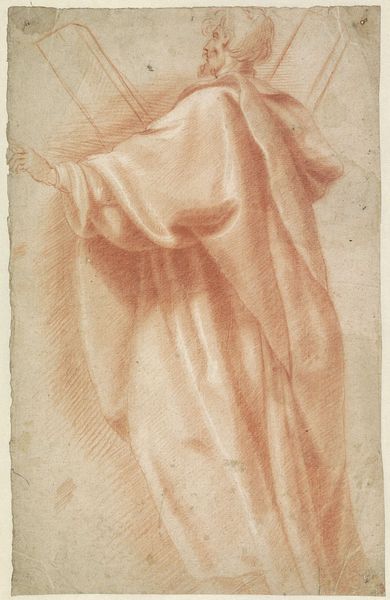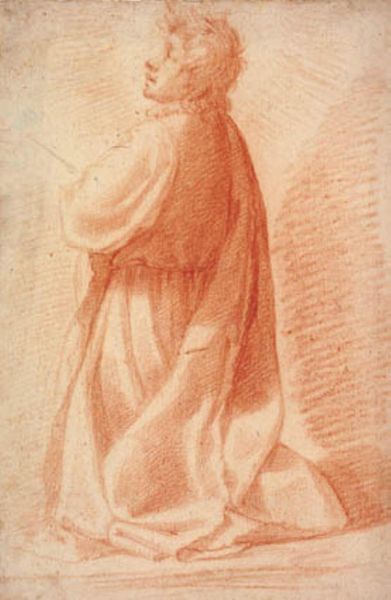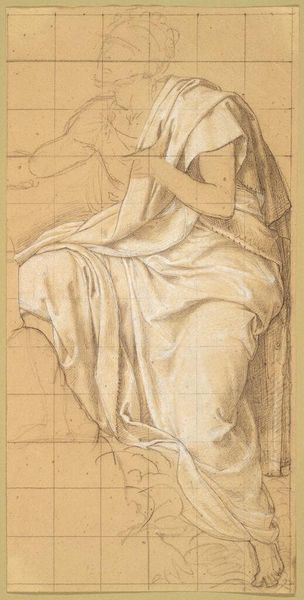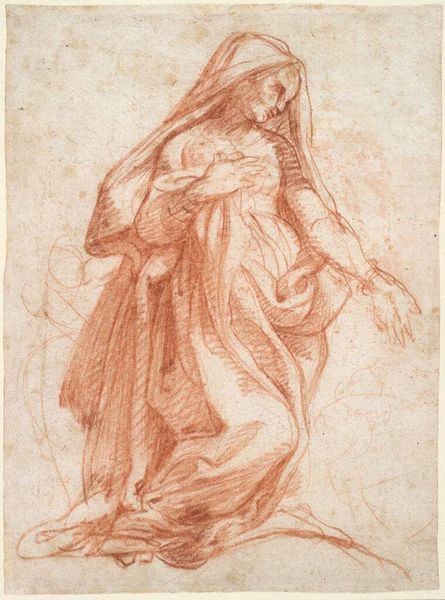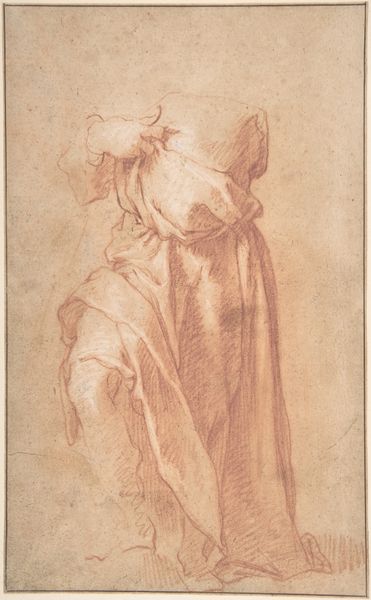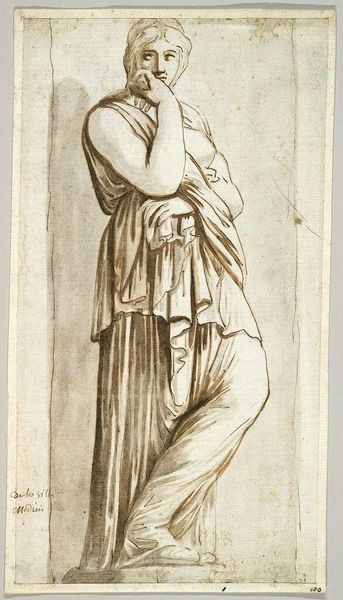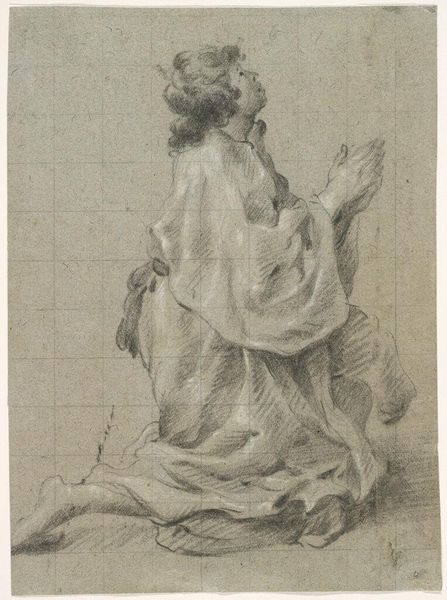
drawing, ink
#
portrait
#
drawing
#
baroque
#
oil painting
#
ink
#
history-painting
#
academic-art
Copyright: Public domain
Curator: This sketch, attributed to Peter Paul Rubens around 1607, is entitled "Study for a Standing Female Saint." Its ink washes on paper present a figure rendered with remarkable fluidity. Editor: There’s a vulnerability that really strikes me in this drawing. The Saint isn't idealized; you sense a human presence and the unfinished quality almost intensifies her spiritual contemplation. Curator: Precisely, and understanding the social context of 17th-century religious art emphasizes Rubens's masterful handling of iconographic tradition. He situates the feminine figure within a moment of introspective contemplation. Her bowed head, though partly unfinished, speaks volumes about idealized notions of womanhood, humility, and power dynamics within the Baroque period and the Church. Editor: From my perspective, what’s compelling is the medium itself: brown ink. We must consider that these washes allow Rubens to quickly explore form, drapery, and the play of light across the saint’s robes. The suggestive nature of the lines points towards labor as exploration of process instead of strict adherence to an ideological model. Curator: That material emphasis speaks to a contemporary lens – we can deconstruct the art-historical gaze. The saint’s ambiguity of identity asks critical questions, forcing one to interrogate patriarchal structures embedded within its creation. Who defines sainthood and who benefits? Editor: Agreed! I'd also suggest, looking closely, it's crucial to appreciate Rubens's economical application of ink to denote form. By observing this working study, you recognize his labor process that eventually gave birth to so many well known pieces during the time and today! The physical act becomes a form of knowledge itself. Curator: Understanding her presence involves deconstructing gendered expectations assigned both historically and contemporarily. A visual dialogue examining intersectional identities – woman, saint, representation – challenges viewers to redefine hagiography today. Editor: Indeed. For me, examining the tangible and temporal features behind this Saint lets one perceive beyond pure veneration. Curator: I agree. Her silent gaze is almost screaming out her-story through patriarchal noise, but from her singular study—her own perspective of this saint that existed inside of her and Rubens together. Editor: Absolutely. There’s profound connection and a complex story etched here. It definitely requires a second look to begin to untangle its process.
Comments
No comments
Be the first to comment and join the conversation on the ultimate creative platform.
